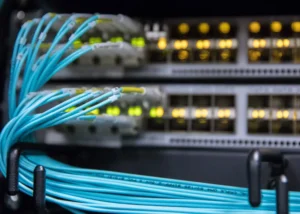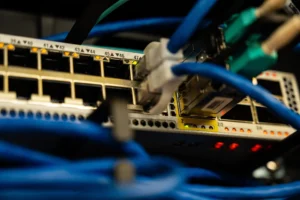Why Cybersecurity Can’t Be Ignored in OT: How to Secure PLC & DCS Networks from Emerging Threats
Introduction
As an operations manager in industrial control, I’ve seen firsthand how quickly the world of operational technology (OT) is changing. Once isolated, our critical infrastructure is now connected, bringing incredible efficiency but also new, serious risks. Ignoring cybersecurity in OT environments, particularly for Programmable Logic Controller (PLC) and Distributed Control System (DCS) networks, is no longer an option. It’s an absolute necessity.

The Evolving Threat Landscape for OT
The idea that OT networks are “air-gapped” is, for most, a myth. Remote access, cloud integration, and the general push for digital transformation have blurred the lines between IT and OT. This connectivity, while beneficial, makes our industrial systems vulnerable to the same types of cyberattacks that plague IT networks, plus some unique ones. Think about it: a ransomware attack on your business systems is bad, but a similar attack on your PLC or DCS could halt production, cause physical damage, or even endanger personnel. We’re seeing more sophisticated, targeted attacks, often leveraging IT-based entry points to pivot into OT.
Understanding PLC and DCS Vulnerabilities
PLCs and DCS are the backbone of industrial operations. They control everything from manufacturing lines to power grids. Many of these systems were designed before cybersecurity was a major concern, meaning they often lack robust security features. Common vulnerabilities include:
Legacy Systems: Older hardware and software often have known exploits that are difficult to patch or upgrade without significant downtime.
Weak Authentication: Many OT devices use default passwords or simple authentication methods, making them easy targets for unauthorized access.
Lack of Segmentation: Flat networks allow attackers to move freely once they gain initial access, making it easier to reach critical controllers.
Remote Access Risks: While convenient, unsecure remote access points are prime targets for cybercriminals.
Insider Threats: Both malicious and unintentional actions by employees can pose significant risks.
These vulnerabilities are not theoretical; they are actively exploited by threat actors ranging from state-sponsored groups to financially motivated criminals.

Practical Steps to Secure Your OT Networks
So, how do we secure these critical systems? It starts with a proactive, multi-layered approach.
Comprehensive Asset Inventory and Risk Assessment
You can’t protect what you don’t know you have. Start with a detailed inventory of all your OT assets, including PLCs, DCS components, HMI (Human-Machine Interface) systems, and network devices. Once you know your assets, conduct a thorough risk assessment to identify vulnerabilities and understand the potential impact of a successful attack. This isn’t a one-time event; it needs to be an ongoing process.
Network Segmentation and Zone Defense
Segmenting your network is crucial. Create clear boundaries between your IT and OT networks, and further segment your OT network into smaller zones based on criticality and function. This “defense-in-depth” strategy limits an attacker’s lateral movement and protects your most critical assets. Firewalls, intrusion detection systems (IDS), and virtual local area networks (VLANs) are your friends here.
Strong Access Control and Authentication
Implement strong authentication for all OT systems. This means unique, complex passwords, multi-factor authentication (MFA) wherever possible, and strict least-privilege access. No one should have more access than they absolutely need to perform their job. Regularly review and revoke access for employees who no longer require it.
Patch Management and Configuration Hardening
While patching OT systems can be challenging due to uptime requirements, it’s vital. Develop a robust patch management program, even if it means scheduled downtime. For systems that can’t be patched, implement compensating controls. Additionally, harden the configuration of your devices by disabling unnecessary services and ports, changing default settings, and removing unused accounts.

Continuous Monitoring and Incident Response
You need to know when something is wrong, and quickly. Implement continuous monitoring of your OT networks for unusual activity, unauthorized access attempts, or deviations from normal behavior. This includes logging and alerting. Equally important is having a well-defined incident response plan. What steps will you take if an attack occurs? Who do you contact? How will you restore operations? Practicing this plan through drills can save valuable time during a real event.
Employee Training and Awareness
Your employees are often your first line of defense, but they can also be your weakest link. Provide regular, engaging cybersecurity training specifically tailored to OT environments. Teach them about phishing, social engineering, and the importance of reporting suspicious activity. A well-informed workforce is a critical component of your security posture.
The Path Forward
Securing PLC and DCS networks from emerging threats is not a one-time project; it’s a continuous journey. It requires a dedicated commitment, investment in the right technologies, and, most importantly, a shift in mindset across your organization. The cost of a cyberattack on your industrial operations far outweighs the investment in robust cybersecurity measures.
Don’t wait for an incident to happen. Protect your operations, your people, and your bottom line. Take a look at the comprehensive OT cybersecurity solutions offered by Powergear X Automation Limited to further strengthen your defenses and ensure your industrial future.
| Model | Title | Link |
|---|---|---|
| 330106-05-30-20-12-00 | Bently Nevada 3300 XL 8mm Reverse Mount Probe | Learn More |
| 330104-00-09-50-02-00 | Bently Nevada 3300 XL 8mm Proximity Probe | Learn More |
| 330910-00-05-05-02-00 | Bently Nevada 3300 NSV Proximity Probe | Learn More |
| 330980-51-05 | Bently Nevada 3300 XL NSV Proximity Sensor | Learn More |
| 330505-03-02-06 | Bently Nevada Low Frequency Velocity Sensor | Learn More |

